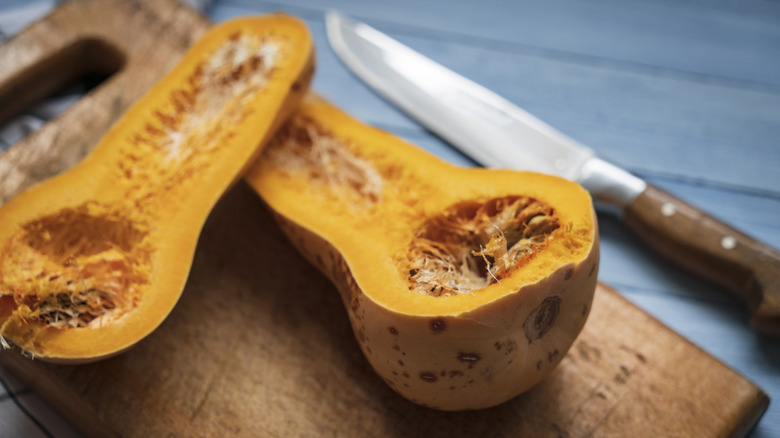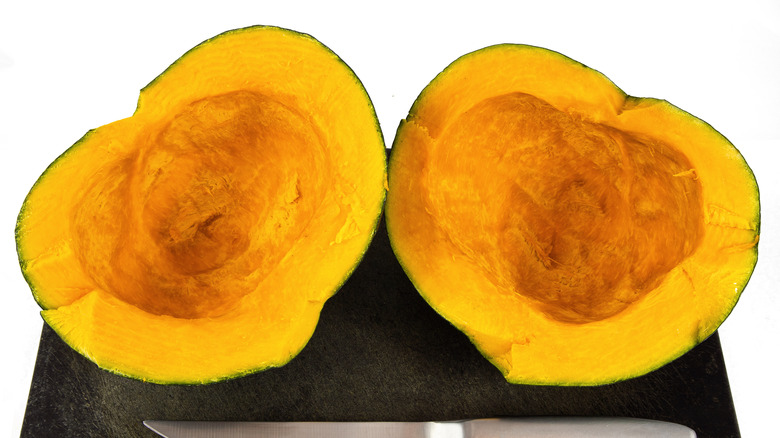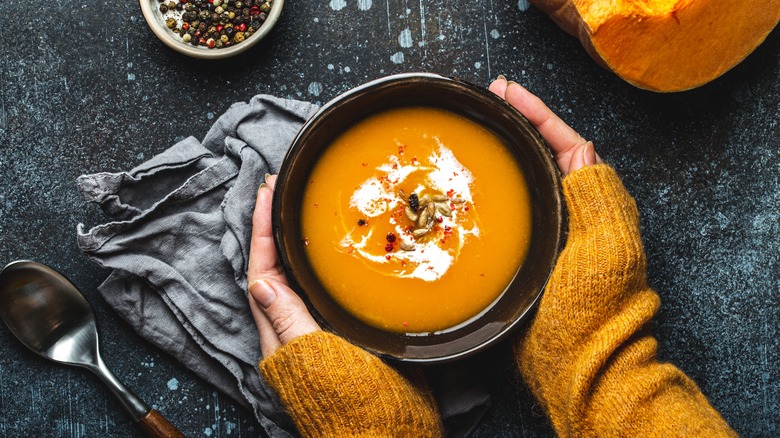The Main Differences Between Buttercup And Butternut Squash
There are lots of similarly-named food products out there, that are nevertheless quite distinct. Baking soda and baking powder, tajine and tahini, tacos (the Mexican food kind) and tako (octopus sushi) — there's only so many sounds the human mouth can make, so there's going to be a good bit of overlap across cultures and cuisines. Another similar pair is butternut squash and buttercup squash; heck, those things are differentiated by literally one syllable. So, how do you tell them apart, and how are they different? Are they even different at all?
The answer is complicated, because they're definitely different, but also strangely similar in a lot of ways. If you're looking at them in their fully-grown forms at the supermarket, there's no way to confuse them, as they look absolutely nothing alike. But if you're eating them in their cooked form, you might have some trouble telling the difference, as not only do they look alike, but they have a surprising number of overlapping qualities in taste.
Similarities between buttercup and butternut squash
Visually, the two squashes are extremely distinct from the outside. Butternut squash is long (around a foot, generally) and vaguely bell-shaped, with a thicker bottom end, and has tan skin. Buttercup squash, by contrast, has dark skin and is more short and round — similar to an acorn squash, but without any of the latter's distinctive ridges.
However, when you cut them apart and scoop out the insides, suddenly it becomes a lot harder to differentiate them. Both buttercup and butternut squash are winter squashes filled with an orange inner flesh, and the differences in hue between them are virtually non-existent. To make things even more confusing, they actually taste pretty similar: both are often described as having a sweet, nutty taste that goes well with soups (although butternut squash is just slightly sweeter). So, how else are they different, and why does butternut squash seem to be much more commonly seen?
Key differences between butternut and buttercup squash
It turns out that while the squashes look and taste pretty similar after being cooked, there are two key reasons that explain why butternut squash is more common. The first is moisture content: buttercup squash tends to be a little drier. This isn't as much of a deal when it comes to soup — but when you roast them both, butternut is going to have the edge in producing a final product that's more moist (although you can get around this by steaming or baking the buttercup squash instead).
That's probably not even the main reason butternut squash is more common — that comes down to another factor entirely. Never underestimate convenience in cooking; butternut squash is way, way easier to work with. Much like acorn squash, buttercup squash's thick skin can make it difficult to cut and peel — at least relative to butternut squash, which has thinner skin and is comparatively a breeze.
In short, while you can make a good meal out of both, and the two are similar, it's pretty easy to see why butternut squash has the edge in restaurant menu appearances. But, you can still get a great dinner out of buttercup squash, as long as you treat it right.


